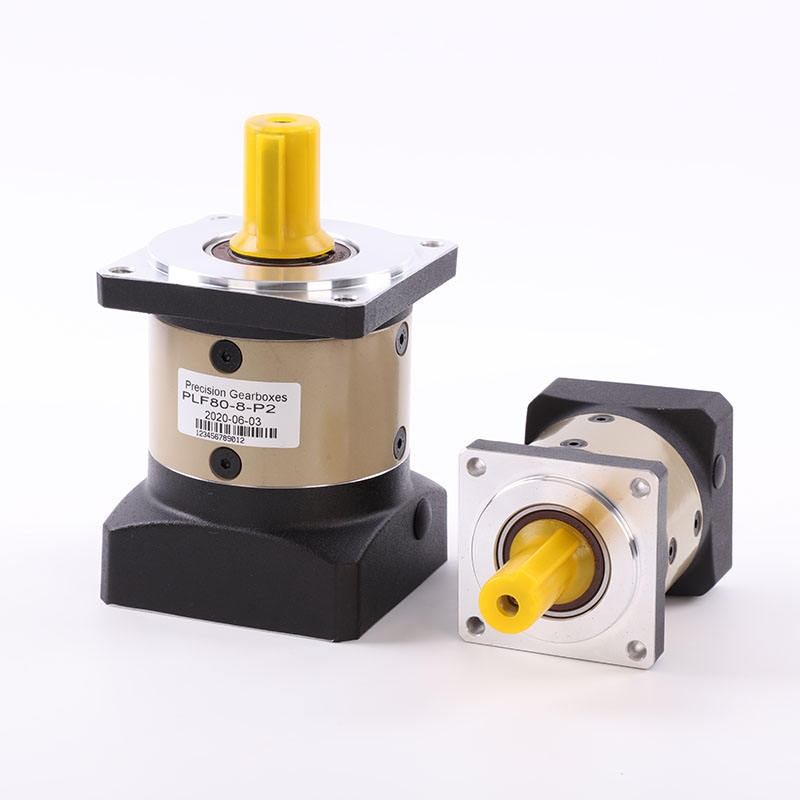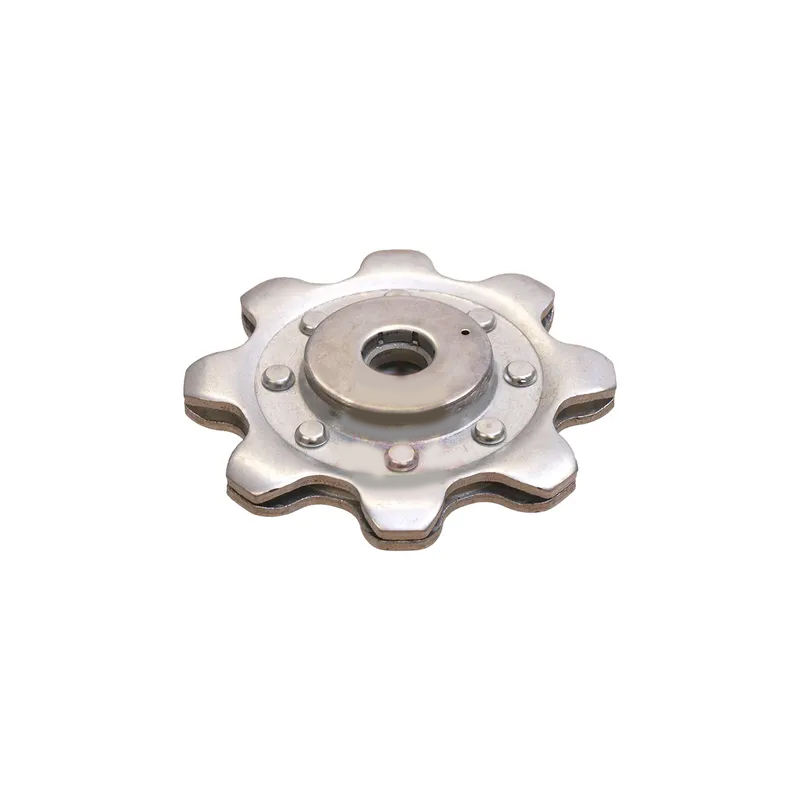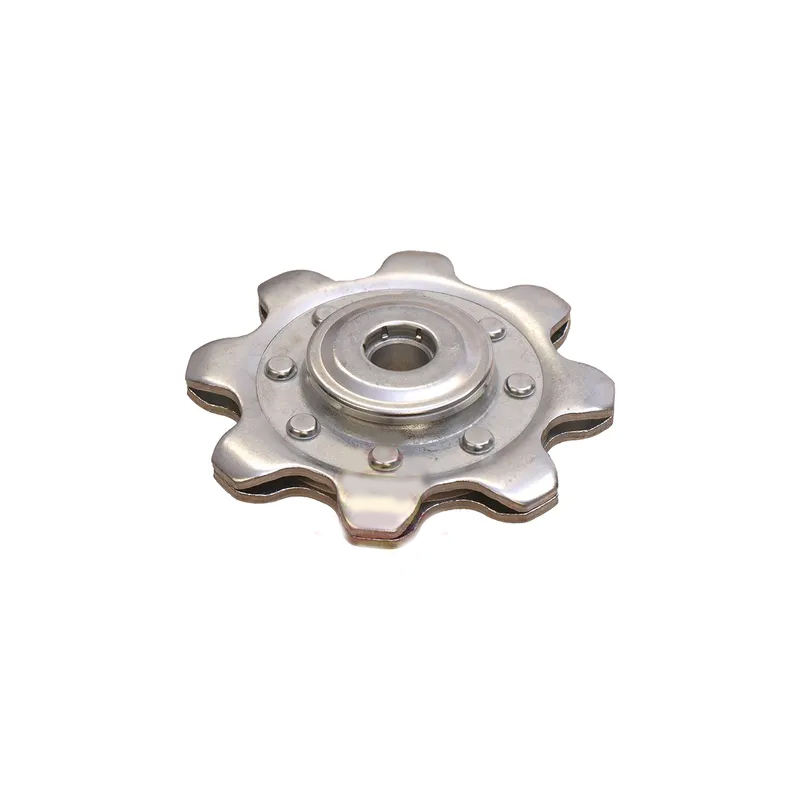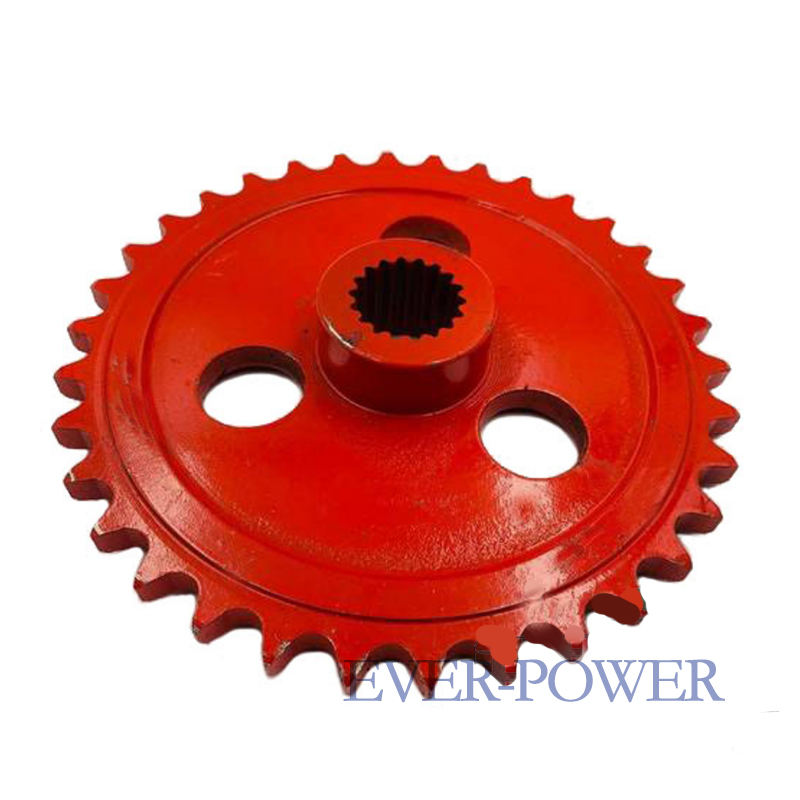Sprockets are toothed wheels designed to engage with chains, belts, or perforations in materials, transmitting rotary motion and power between shafts. They are critical components in machinery across industries like automotive, manufacturing, and robotics. Whether you're designing a conveyor system or a bicycle drive, selecting the right sprocket ensures efficiency, durability, and performance. In this guide, we delve into the technical specifications, types, and applications of sprockets, providing you with the data needed to make an informed decision.
Understanding sprocket parameters is essential for compatibility and optimal performance. Below are the primary specifications to consider:
Sprockets come in various designs tailored to specific uses. Here's a table summarizing common types:
| Type | Description | Common Applications |
|---|---|---|
| Single Strand Sprocket | Designed for single-row chains, offering simplicity and cost-effectiveness. | Bicycles, light machinery, conveyor systems. |
| Double Strand Sprocket | Features two rows of teeth for higher load capacity and reduced wear. | Heavy-duty industrial equipment, automotive engines. |
| Idler Sprocket | Used to guide chains or take up slack, without transmitting power. | Tensioning systems in conveyors or drives. |
| Quick Disconnect Sprocket | Allows for easy removal without disassembling the entire shaft assembly. | Maintenance-intensive machinery, agricultural equipment. |
Material choice impacts durability, noise, and suitability for environments. Refer to this table for guidance:
| Material | Properties | Best For |
|---|---|---|
| Carbon Steel | High strength, excellent wear resistance, economical. May require coating for corrosion protection. | General industrial use, automotive transmissions. |
| Stainless Steel | Corrosion-resistant, durable in humid or chemical environments, higher cost. | Food processing, marine applications, pharmaceuticals. |
| Nylon/Plastic | Lightweight, quiet operation, resistant to chemicals, but lower load capacity. | Office machinery, low-noise applications, light conveyors. |
| Cast Iron | Good wear resistance, absorbs vibration, but brittle under impact. | Heavy machinery, agricultural equipment. |
Have questions? Here are answers to common queries about sprockets:
What is the difference between a sprocket and a gear?
Sprockets engage with chains or belts via teeth, transmitting motion through a chain, while gears mesh directly with other gears to transfer torque. Sprockets are typically used for chain drives, offering flexibility in distance between shafts, whereas gears are for direct, short-distance power transmission with higher precision.
How do I determine the correct sprocket size for my application?
Calculate based on the chain pitch, number of teeth, and shaft speed. Use the formula: Pitch Diameter = Chain Pitch / sin(180° / Number of Teeth). Ensure the bore size matches your shaft diameter, and consider the load capacity—refer to manufacturer charts for specific chain and sprocket combinations to avoid under-sizing.
Can I use a sprocket with a different chain pitch?
No, the chain pitch must exactly match the sprocket teeth spacing. Mismatching can cause skipping, excessive wear, chain failure, and potential machinery damage. Always verify pitch compatibility (e.g., ANSI, ISO standards) before installation.
How often should sprockets be replaced?
Replacement depends on usage intensity, environment, and maintenance. Inspect regularly for signs of wear like hooked teeth, cracks, or elongation. In high-use industrial settings, sprockets may need replacement every 6-12 months, while light applications can last years. Lubrication and proper tensioning extend lifespan.
What causes sprocket wear, and how can it be reduced?
Wear results from friction, misalignment, overloading, or inadequate lubrication. Reduce wear by ensuring correct alignment during installation, using quality chains, applying appropriate lubricants, and avoiding excessive loads. Regular maintenance checks help identify issues early.
Are there temperature limitations for sprocket materials?
Yes, materials have thermal limits. Steel sprockets can withstand high temperatures up to 400°F (204°C), but may lose hardness. Nylon sprockets are limited to around 200°F (93°C) before deforming. For extreme temperatures, consider heat-treated steels or specialty alloys, and consult manufacturer guidelines.
Proper installation ensures longevity and performance. Follow these steps:
Sprockets often adhere to standards like ANSI (American National Standards Institute) or ISO (International Organization for Standardization). These ensure interoperability and safety. For example, ANSI B29.1 covers roller chain sprockets. Always verify compliance for your region and application to avoid compatibility issues.
Sprockets are versatile. Common applications include:




